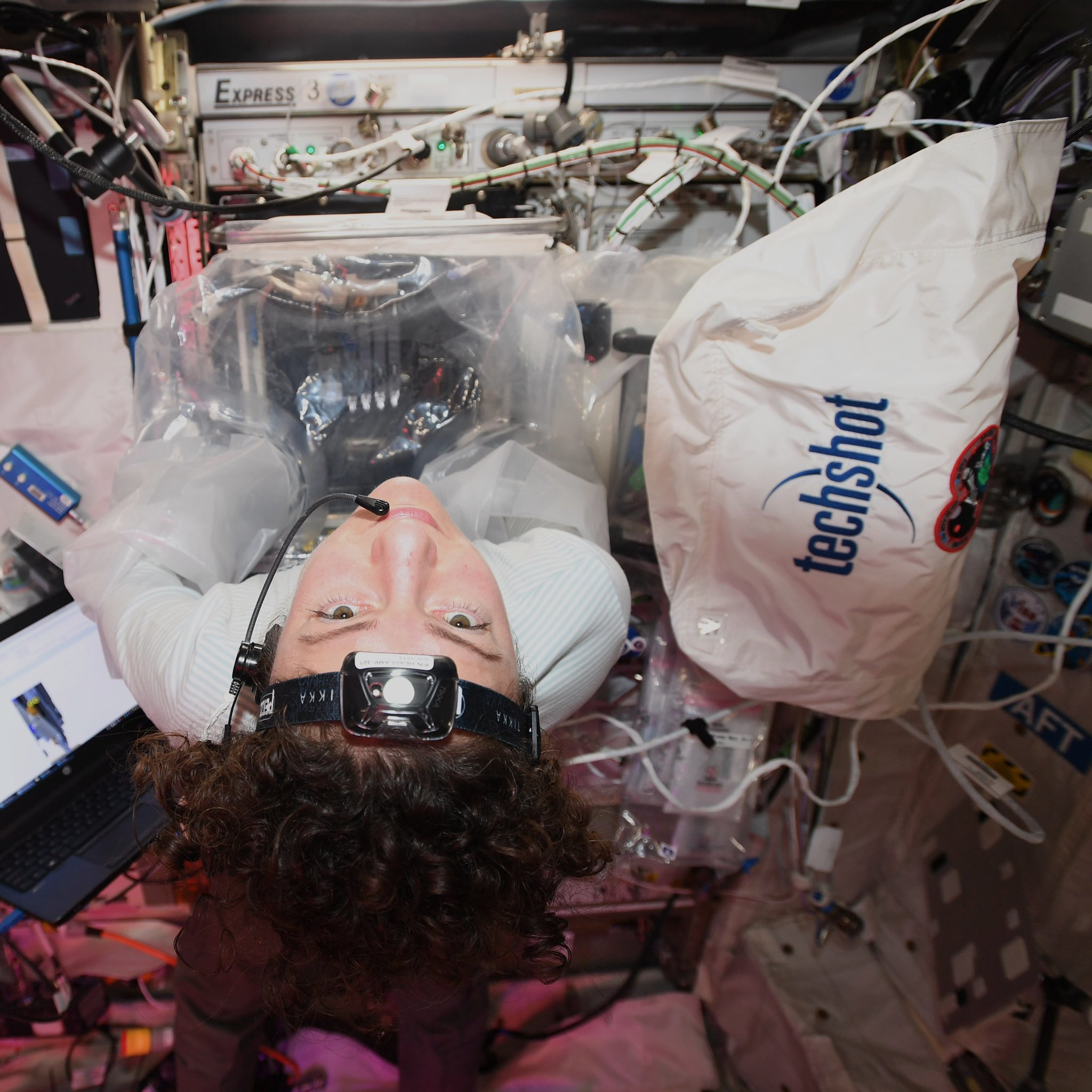MICHELLE THALLER: A really fun question is that when astronauts are in space they're not experiencing gravity, so how does digestion work? We sort of think of food moving down in our bodies, it seems that maybe gravity would have something to do with that. The amazing thing is that it really doesn't and this was one of the first things we discovered when we sent animals first and then people up into space. Some people wondered if you could swallow, if you could digest at all without the force of gravity. And it turns out that the act of peristalsis, the way your throat and your intestines squeeze themselves, will actually move food and water through your digestive system without gravity at all and you can even test that with people lying in hospital beds. When you think about somebody that's actually lying down, there's no force of gravity that's pulling food in one direction or the other. The human body is actually pretty good at moving food through without the force of gravity. Now other part of this is what happens when the food comes out the other end, because this is a natural thing that all humans do every day.
Well, you've now reached the wonderful science of space toilets. They actually act with suction. Now if you've ever been to the dentist's office and the dentist wants you to spit and he holds up a little cup with a tube attached to it and there's suction that takes the water down the tube. A space toilet acts very much that way; there's suction, there's a current of air that actually draws the waste down so it can be disposed of. And, honestly, sometimes it doesn't work perfectly. This is one of the things that astronauts have to deal with. When you think about the word 'floater', that has happened, where something escapes and you need to go get it. Some of the worst parts of human space flight in the very early days, like in Gemini all the way back in the 1960s, was people would collect their urine in a little plastic bag and sometimes they broke. So there have been some people up there and some very bad circumstances. Today, the toilet on the space station works very well and suction brings everything down and the best thing I can compare it to is the dentist's spit cup.
They actually have a little video camera so you can see if anything is floating around in the toilet before you get up. Yeah.






